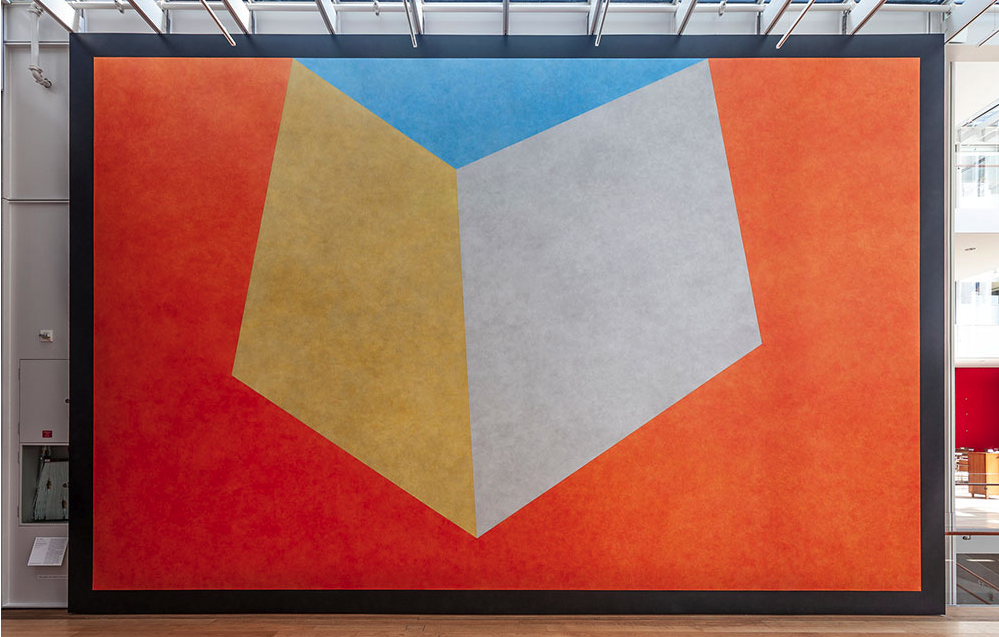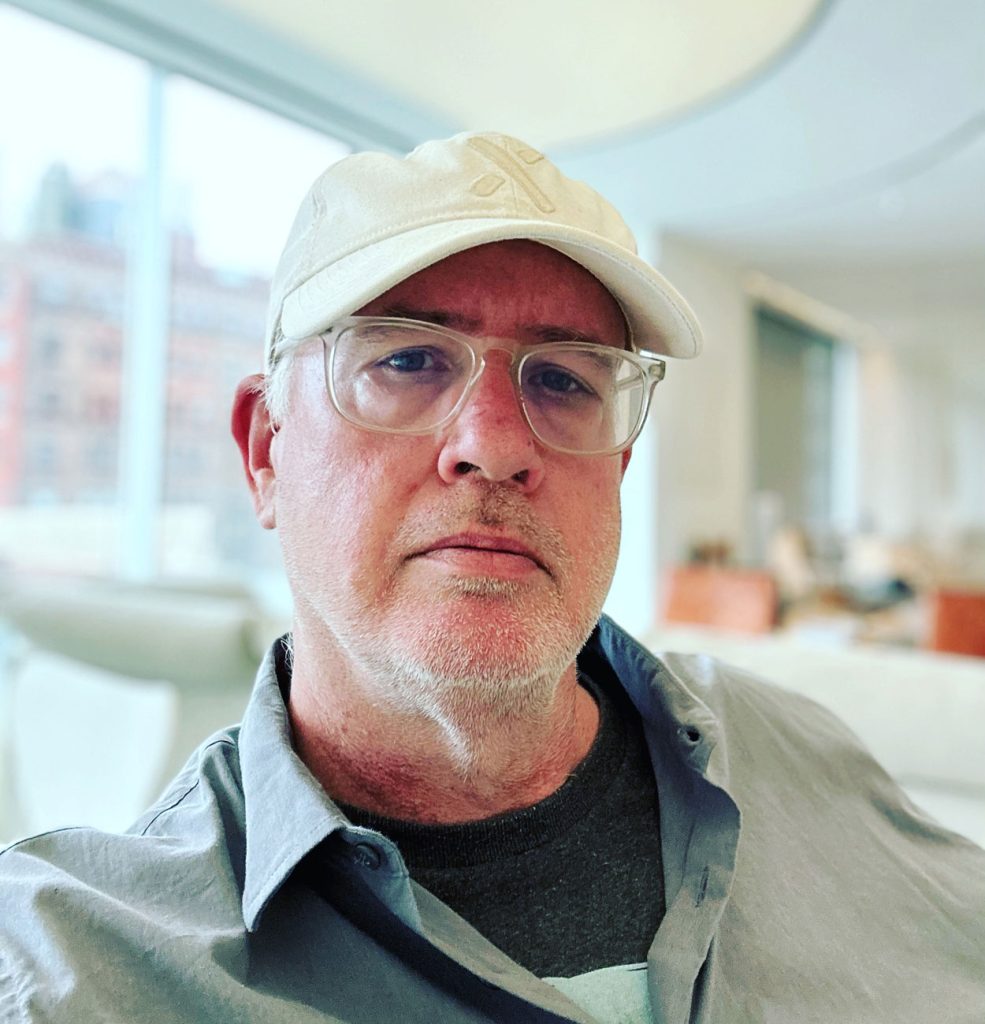
#iamnscad is a series of alumni stories where graduates tell, in their own words, how NSCAD has influenced and shaped their creative practices.
I arrived in Halifax to begin the MFA program at NSCAD from, of all places, divinity school. I had done some art history in a previous graduate degree and had a pretty clear idea of what I wanted to do with the two years of the program. My plans were very specific and narrowly focused on photography and theory. These goals – very specific goals – were never really achieved.
Instead, I was introduced to an entire universe I never knew existed. In the bowels of the sculpture department (then situated in the basement of 5163 Duke St), and at cafeteria tables over egg salad sandwiches, I listened to faculty and other students talk about Agnes Martin, Jeff Wall, Martha Rosler, On Kawara, Jenny Holzer, Donald Judd, Sol LeWitt, Carl Andre, Anselm Kiefer, Gerhard Richter, Ann Hamilton, John Baldessari (of course) and the many others that were closely associated with conceptualism and minimalism. As my failures as a photographer mounted, I began to understand myself in a much broader context than the confines of disciplines. Art is expansive and cares little about modes of production.
I left Halifax in 1997 and moved to the US where I now live. Eventually settling in Connecticut, I was working as a curator at an alternative space in Hartford when I was introduced to Sol LeWitt who lived a short drive away in Chester. I would eventually become friendly with Sol, doing a couple of projects with him and working with his personal collection – rich with work by many of the artists I had learned about in the cafeteria at NSCAD listening to Gerry Ferguson, Garry Neil Kennedy, Kelly Mark, Stephen Horne, Thierry Delva and others.
In conversations, Sol eventually learned I had been at NSCAD. And he lit up. He talked about how important NSCAD was for him and others at a critical moment in their careers (and art history). NSCAD “took us seriously at that time” I remember him saying. I listened to him talk about how he and others were just beginning to describe what they were trying to do, a description reflected in 1968 with LeWitt’s own Sentences on Conceptual Art. Garry Neill Kennedy had only just arrived in Halifax the year before. The rest, as they say, is history.
And then one day in late winter I was having lunch with him in Chester when he asked about my own art practice. I described for him my experience at NSCAD, and, slightly embarrassed, talked about my having stopped making art. I described my work as a curator having taken over, and how I struggled to restart art making after a long period of dormancy.
I remember him asking across the table what the problem was. I described my frustration at trying to return to artmaking only to repeatedly find myself returning right back to the ideas and themes that I had been occupied with ten years earlier. I described feeling like I should do something new, something different, that I should move beyond what had felt like a failure. Puzzled, he said “I don’t get it. You are returning to where you left off for a reason. You are returning to what is yours. It’s what you do. Just do it and don’t worry.”
It was a major moment in my life. Though it would take me ten more years to return to making the work I had abandoned in 1997, the insight was powerful for another reason altogether. It changed the way I think as a curator. Morandi, Opałka, Kawara and others all made a new kind of sense. My time at NSCAD and my conversations with Sol began to converge.

As a curator, I am now a part of the international conversations NSCAD had introduced me to, conversations Sol had been part of and found support in, conversations Sol insisted I return to and participate in. I have worked with work by LeWitt himself, as well as Hanne Darboven, Tracey Emin, Marina Abramović, Cornelia Parker, Agnes Martin, On Kawara, Roman Opałka, Joseph Albers, Giorgio Morandi, Fred Sandback and the many others NSCAD introduced me to – curating exhibitions from the collection I now manage as well as with work from other private collections and museums. NSCAD had taken Sol and others seriously when it wasn’t completely clear what they were really doing. NSCAD had introduced me to these artists and ideas. And Sol had helped me find my way back into the global conversations those artists had started. NSCAD took Sol seriously. Sol was taking me seriously.
While at NSCAD, though, there were those that critiqued the celebration of NSCAD’s history as an international hub of global conversations in art and ideas. In the late 80s and early 90s, there was a strong element at NSCAD that saw those global conversations as exclusionary, hegemonic narratives we would now call colonialist.
Artists and the art school should be much more concerned with the local, the specific, the individual went the critique. The idea of grand narratives was ridiculed. We were in a postmodern era where the focus ought to be on localized questions and concerns, questions of identity and specificity – not the ideas and concerns of artists in New York, Paris, London, Berlin or Los Angeles. There was – and is – validity to that critique.
Over the past twenty or more years, though, I have met many artists, art historians, critics and curators who – upon learning I went to NSCAD – talk excitedly about how influential the school had been. Isaac Julien, Norman Bryson, Laurent Grasso and others have spoken to me about NSCAD’s historical importance.
NSCAD’s presence continues to be felt well beyond Halifax. In that, the postmodernist critique missed something. While hegemonic narratives might have been problematic in overwhelming local histories and identities, it is not like Halifax didn’t influence those it was in dialogue with. Conversation goes two ways. Today, NSCAD’s DNA is everywhere.
Steven Holmes MFA 1994
_______________
Steven Holmes has been the curator of The Cartin Collection in New York and Hartford since 2005, and was curator of the Bass Museum of Art in Miami Beach from 2008 to 2013. He lives in Collinsville, Connecticut. www.stevenandrewholmes.com
